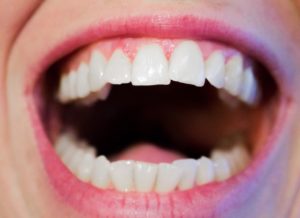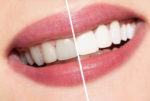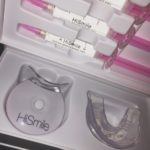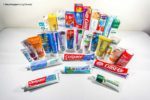Table of Contents
There are many facts and myths surrounding teeth whitening. We’ve all seen videos on social media of influencers promoting different teeth whitening methods, but are they effective? Most people’s teeth become darker over time because of aging and foods and drinks that stain teeth. Inevitably, you may be considering teeth whitening to help get your teeth back to their pearly white color. Read on to discover more information about the effectiveness of teeth whitening and what methods are recommended by dentists.
The ADA and teeth whitening
Teeth whitening is a relatively new practice and the ADA has worked to define the different methods over the last few years. The ADA defines teeth whitening as “any process that will make teeth whiter.” These processes include dentist dispensed and at home use products like whitening strips, dentist applied bleaching products and whitening toothpaste. There is currently only one over the counter whitening product and 11 whitening toothpastes that have the ADA Seal of Acceptance. The professional service portion of the ADA Seal Program has been discontinued so there is no way for professionally applied products to earn a seal. However, the ADA does recommend consulting your dentist before you start any teeth whitening methods. Your dentist will also be able to recommend the best method for your teeth.
How does it work?
There are two different ways teeth whitening products make your teeth whiter. Most at-home whitening methods and professionally applied products contain peroxides to get deeper within your enamel to whiten the entire structure. These products usually contain carbamide peroxide, that breaks down into hydrogen peroxide, and bleaches your teeth. Whitening toothpaste contains different chemicals that bleach your teeth to remove just the surface stains. These methods break down stains at the molecular level to make your teeth look whiter.
Professional or at home whitening?

No matter which method you choose, you should always ask your dentist before you start teeth whitening. Your dentist knows your teeth best and can recommend the best products based on how many cavities you’ve had and your teeth’s sensitivity. According to a summary of teeth whitening research by Clifton M. Carey, BA, MS, Ph.D., both peroxide-based methods and whitening toothpaste are effective. On average, these methods can show a one to two shade difference in teeth lightness.
If your teeth do have sensitivity issues, your dentist will most likely recommend using a whitening toothpaste over any other bleaching methods. If you’re looking for a quicker and long-term solution, professional whitening is the way to go. Whitening toothpaste will only bleach the surface of teeth while professional methods and whitening strips whiten into your enamel. You should always work with a dentist who is experienced in teeth whitening versus performing it at home method by yourself if you’re concerned about safety and effectiveness.
Professional teeth whitening methods
There are two different methods of professional teeth whitening that most dentists use. You’ll see results for both methods and you can come back into the office and get them done more than once for more results. Most local dentists offer teeth whitening along with their cleaning services.
Tray whitening
The tray method is one of the most common professional methods. Your dentist will create a plastic mold or “tray” from a mold of your teeth. These trays look like invisible aligners but are filled with whitening gel. Your dentist will pick the right gel for your teeth and custom fit the trays to prevent the gel from leaking. How long you wear the trays depends on your teeth sensitivity and the type of gel. Most dentists recommend you wear them at night or briefly during the day.
Zoom whitening
Zoom whitening is a bleaching method of teeth whitening that uses a bright light to whiten teeth. Your dentist will paint a protective coating on your teeth and a hydrogen peroxide whitening gel. Then your dentist will direct the Zoom laser onto your teeth to activate the gel for 15 minutes. The gel is then removed and re-applied for two more 15-minute sessions. The whole process only takes about an hour and is one of the quickest ways to see teeth whitening results.
How to keep your teeth white
You should be brushing at least twice a day and flossing once a day to keep your teeth clean, white and cavity-free. If your dentist gives you the okay, you can also use whitening toothpaste once or twice a week along with other whitening methods. To promote whiter teeth, try to brush your teeth after you eat or drink foods that can cause stains.

There are some foods and drinks that you should avoid or only enjoy in moderation if you’re trying to keep your teeth white. This includes soda, dark-colored fruits, red wine, coffee, and tomato-based sauces. However, there are foods that also promote both good oral health and white teeth. Drinking lots of water is key to flushing out bacteria and any food particles that can stain teeth. Some foods that promote good oral health include cheese, yogurt, leafy greens, cauliflower, and water-based fruits and vegetables like celery or watermelon.
After teeth whitening, you should follow all the appropriate aftercare instructions and contact your dentist if you experience any prolonged symptoms. Teeth whitening is an effective way to boost your confidence and keep your smile looking its best.




